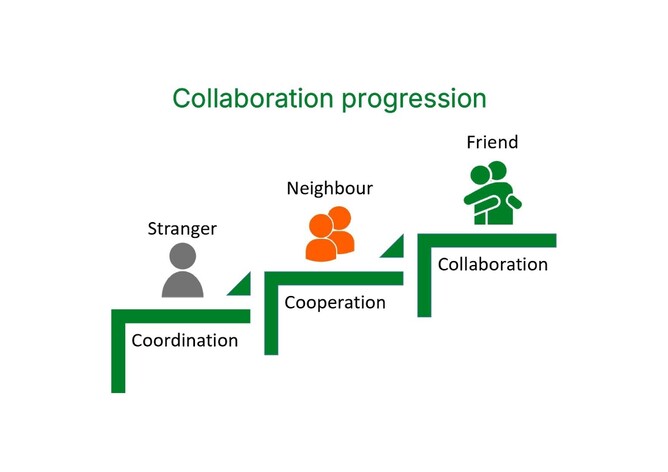At Peopleology, we often see teams in the transport and infrastructure sectors using the word collaboration, but not always in the same way. True collaboration doesn’t just happen because it’s written into a contract. It evolves through intention, trust, and shared purpose.
There’s a clear progression that teams move through as they learn to work together effectively:
Coordination → Cooperation → Collaboration
Think of it like moving from being strangers, to neighbours, to friends, a great analogy from Col Fink.
1. Coordination
This is where it all begins. Teams share information to complete specific tasks. It’s tactical and functional, information is shared only when required to get the job done.
2. Cooperation
At this stage, efforts start to align. Teams might support each other’s goals, but resources and priorities remain separate. The focus is still on meeting individual or organisational objectives rather than shared ones.
3. Collaboration
Here’s where the real magic happens. Trust deepens, resources are pooled, power is shared, and the focus shifts to what’s best for the project and everyone involved.
Most teams get stuck somewhere between coordination and cooperation, polite neighbours rather than true friends.
But the difference is clear in the results: collaboration delivers outcomes no single party could achieve alone.
So the question isn’t “Are we collaborating?” — it’s “Where are we on the progression, and what will it take to move forward?”


